Campervan & Motorhome Hire | 0208 573 2300 (UK) or +44 208 573 2300 (overseas) or email

Hit enter to search or ESC to close
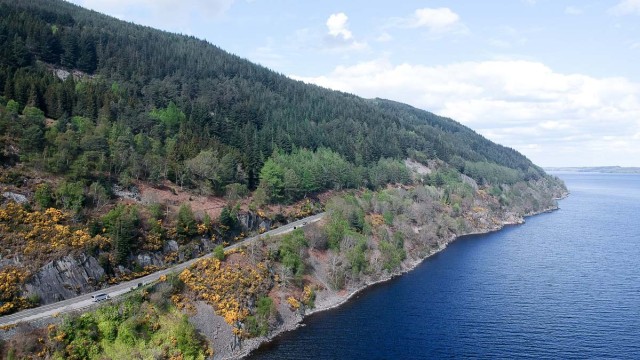
The best way to do the NC500, the world-famous road trip in Scotland: 516 miles of pure bliss!
14 May, 2025
Posted by Mike | Spaceships Crew
The North Coast 500 or NC500 is now one of the world's most famous and popular road trips. It's not hard to see why. 516 miles/830 kms of fantastic roads winding around the north coast of Scotland. It's one of the most popular UK destinations for our Space Travellers, so we're going to show you the best way to do the NC500.
What is the NC500?
The NC500 was originally created by the Tourism Project Board of the North Highlands Initiative with the aim of encouraging more visitors to the Highlands and North Scottish coast. Since 2019, the Scottish based Danish landowner, Anders Holch Povlsen has managed the project and the NC500 brand, but these normal public roads are accessible to everybody.
Starting in the historic town of Inverness, it follows the coastline up to the north of Scotland taking in the rugged landscape, spectacular views and magnificent coastline along the way. Following the NC500 gives you the chance to see the best of the north Scottish coast along with its beautiful scenery and charming villages.
The idea has certainly caught the imagination. Since its launch in 2017, it now has an estimated global audience of 11.2 billion and is on every traveller's bucket list.
Here our our top tips for the best way to do the NC500.
Plan your NC500 trip in advance
Planning ahead is an important part of finding the best way to do the NC500. In the summer months, the weather may be better, but there will be more tourists around so campsites and accommodation are more likely to be busier and more expensive.
Spring and autumn are fantastic times to do the NC500. Not only are there fewer visitors, but the colours are beautiful. New flowers and trees coming into leaf in Spring, from March to June, with truly spectacular Autumn colours from September to November.
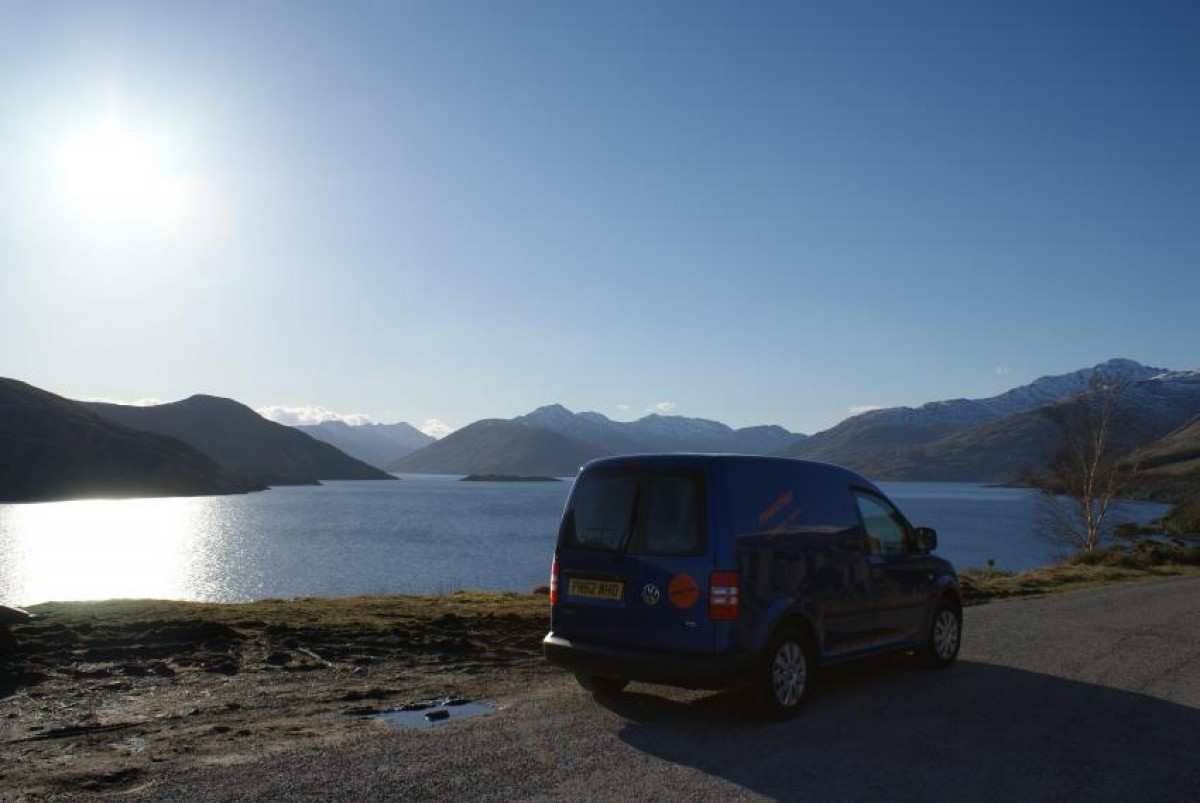
A Spaceships Camper Car allows you to see all the NC500 - on a budget
Take time to reasearch your NC500 route. You would ideally need a minimum of 7 days to cover the entire NC500. That averages out at about 71.5 miles per day. It may not sound much, but with the slower, winding roads and so much to see along the way, slower is definitely better.
If you are restricted for time, it may be better to pick a section of the NC500 and really take your time exploring that area.
Book accommodation in advance, especially if planning to travel in summer. If you hire a campervan or motorhome to do the NC500, you will of course have both your transport and accommodation sorted. And as part of your Spaceships campervan rental, you get free membership of the Caravan and Motorhome Club for your hire. This gives you free access to their online campsite booking and access to over 2,700 sites at CAMC member rates. Just click the link on your Spaceships booking confirmation to get your free membership.
Choose the right vehicle
This is one of the most important parts of planning your NC500 trip. You can do the NC500 in your own car, but it's a lot of miles and you will have to find accommodation en route. You could also take a tent, but the Scottish weather is notoriously unpredictable - at any time of year. You could be trying to pitch your tent in the wind and rain, or worse still, trying to pack it away wet. Camping is great fun, but nobody wants to chase their tent around a field in the night when it's blowing a traditional Scottish "hoolie" - roughly translated as a howling gale!
A motorhome rental or campervan hire could be your transport and accommodation on the NC500.
With that in mind, a campervan is possibly the best way to do the NC500. It's fuel efficient, easy to drive and park and will mean you get to see more of the NC500 highlights. For example, one of our featured highlights later in the blog, Bealach na Ba, is a winding mountain pass near Applecross, but you would find it challenging to take that pass in a motorhome in summer, when there is more traffic around.
A Campervan would be a better choice for the summer if you want to explore the more remote roads and destinations, where one of the self-contained motorhomes is better if you are looking for more convenience and comfort. Both the Compact and Luxury Spaceships motorhomes have central heating, hot water, shower, toilet and kitchen with oven, hob and fridge/freezer on board.
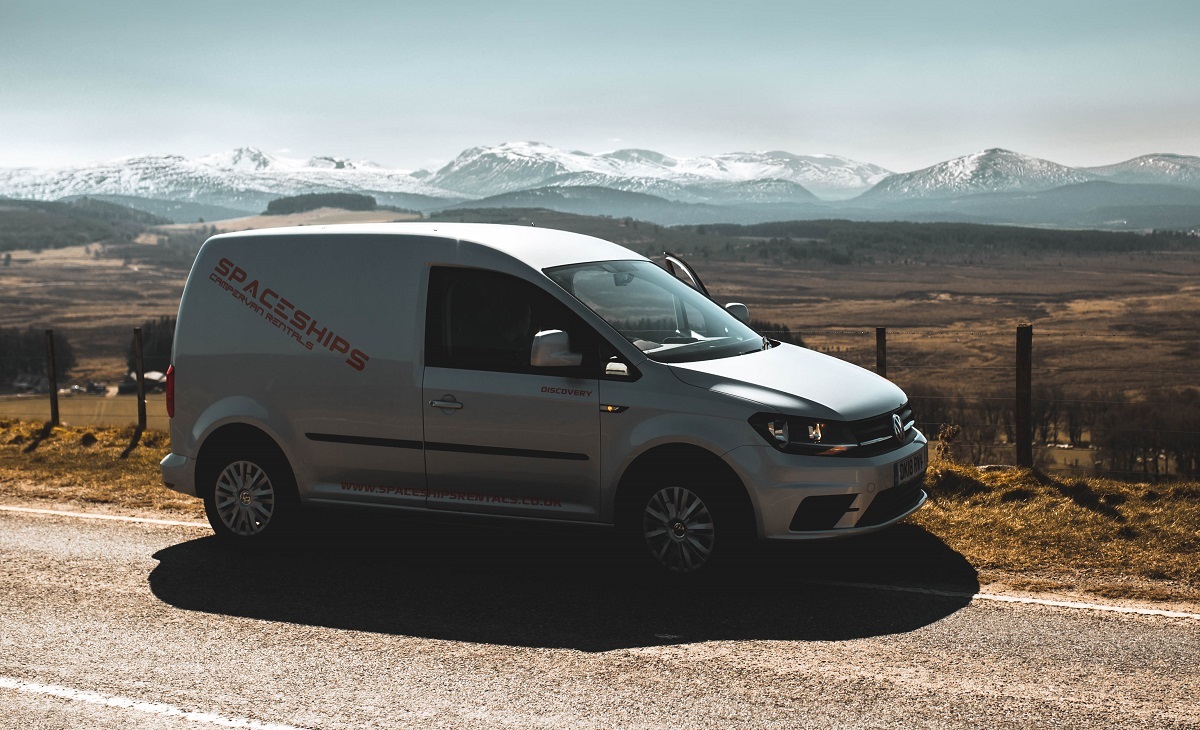
Take-off to the NC500 in a Camper Car
The Spaceships Camper Car - access all areas
The Camper Car is custom-converted from the VW Caddy van and features a comfy double bed, a water tank, camping gas stove and 12v chiller, as well as an awning to extend your living area. You can add bedding and outdoor furniture to your booking for the ultimate vanlife experience!
Campervan hire is also cheaper, which may allow you to stay on the road for longer and extend your NC500 trip. With Camper Cars starting from as little as just £30 per day, you can even afford a couple of nights in a hotel, or a some fabulous Scottish food in a restaurant. The Spaceships Camper Car is probably cheaper than hiring a car, and on top of that, you can cook, eat and sleep in it!
The Spaceships Voyager - a practical 4-berth campervan
The Voyager has 2 double beds, 2 camping stoves, a 15 litre water tank and a small camping fridge/freezer on board. It also has an awning to go on the side of the campervan. It sleeps up to 4, with one double bed in the back, and a second across the width behind the drivers and passenger seats. It also has an electric hook-up to power the light and fridge overnight, as well as to charge your devices.
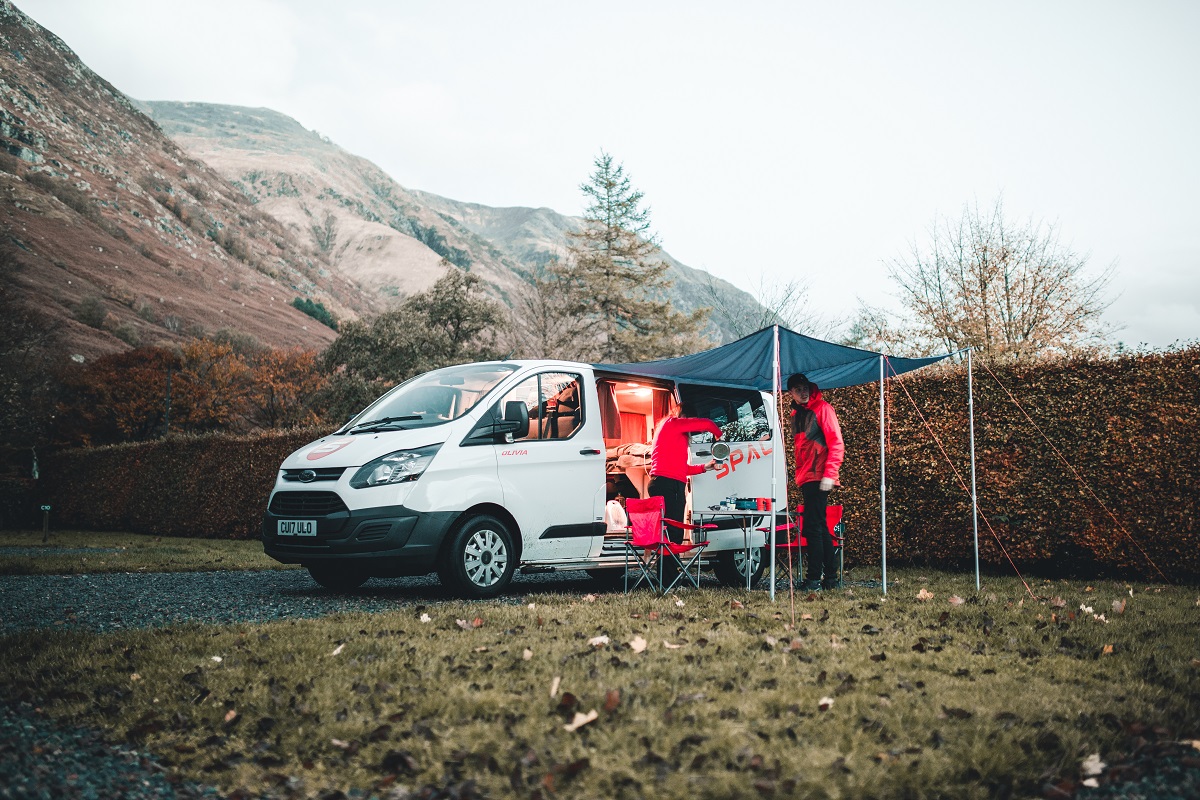
A Spaceships Voyager coud be your transport and accommodation on the NC500
The Spaceships VW Cosmo- a high spec 3-berth campervan
The new VW Cosmo Campervan has a king size bed at the back of the van, a second large "loft" double in the pop top roof, central heating, triple insulation, a 2 ring hob, a fridge/freezer and hot & cold water. A sliding side dor and rear double doors give access to the living and sleeping areas, with tinted privacy glass all around.
It has an electric hook-up as well as an Xtreme leisure battery for longer off grid. The central heating and hob are powered by the diesel fuel tank, so no gas cylinders, LPG or re-filling. As long as you have diesel in the fuel tank, you're cooking - and toasty warm with the central heating on. This makes the VW Cosmo the perfect campervan to hire for a an NC500 trip in Spring, Autumn or Winter, when the roads are quieter, but no less spectacular.
All Spaceships campervans and motorhomes include unlimited mileage for up to 4 drivers plus all your cutlery and cooking gear for your NC500 road trip.
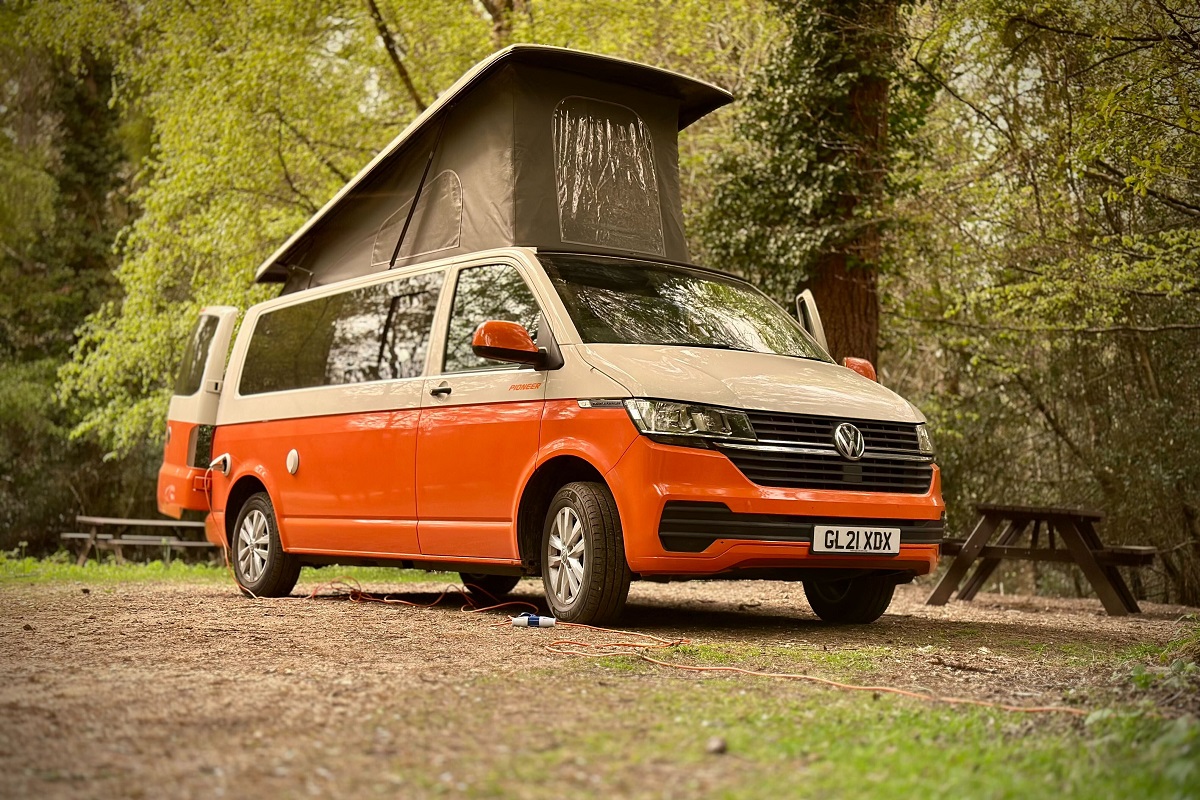
The new VW Cosmo Campervan is ideal for the NC500 at any time of year
Which way round should you do the NC500?
The NC500 begins and ends in Inverness, the "capital" of The Highlands of Scotland. Starting from Inverness, you can either go up the A9 and the east coast towards Wick and John O'Groats, which is known as the anti-clockwise route.
Alternatively, head west from Inverness on the A832 towards Applecross, before meandering up the west coast towards Ullapool and Durness, known, unsurprisingly, as the clockwise route. Either way, Inverness is only 14 miles from Loch Ness, so you could head south down the A82 at the end of your NC500 trip to see if you can spot Nessie, the Loch Ness monster.
The choice is yours and both ways are beautiful. One theory is that because you will be driving a right hand drive vehicle, clockwise is the best as the passenger on the left will be closer to the coastline and have the best views. That also means you may encounter Bealach na Ba on your first day. You may want to save this as a highlight or get more experience of navigating the narrow Scottish roads before you take on this steep mountain crossing.
For many though, anti-clockwise is the preferred direction as the scenery gets even better as you travel along the west coast. It also gives you the opportunity of visiting the Isle of Skye before you finish. You can drive onto Skye by taking the A87 south of Locharran, then crossing the Skye bridge onto the island from the Kyle of Lochalsh.
Don't miss the "must-see" NC500 highlights
A big part of making it the best way to see the NC500 is to make sure you see all the best bits. Not so easy, as the route is constantly breathtaking and rewarding with dramatic scenery, rugged coastline and beautiful beaches, making it difficult to pick out highlights.
Here are a few of our favourites.
Dunrobbin Castle
If you're heading anti-clockwise this will be one of your first NC500 must-see stops. This magnificent 189 room stately home with its beautiful gardens overlooks the Morray Firth and is situated just north of Dornoch and Golspie. It has been home to the Earls and Dukes of Sutherland since the 13th century.
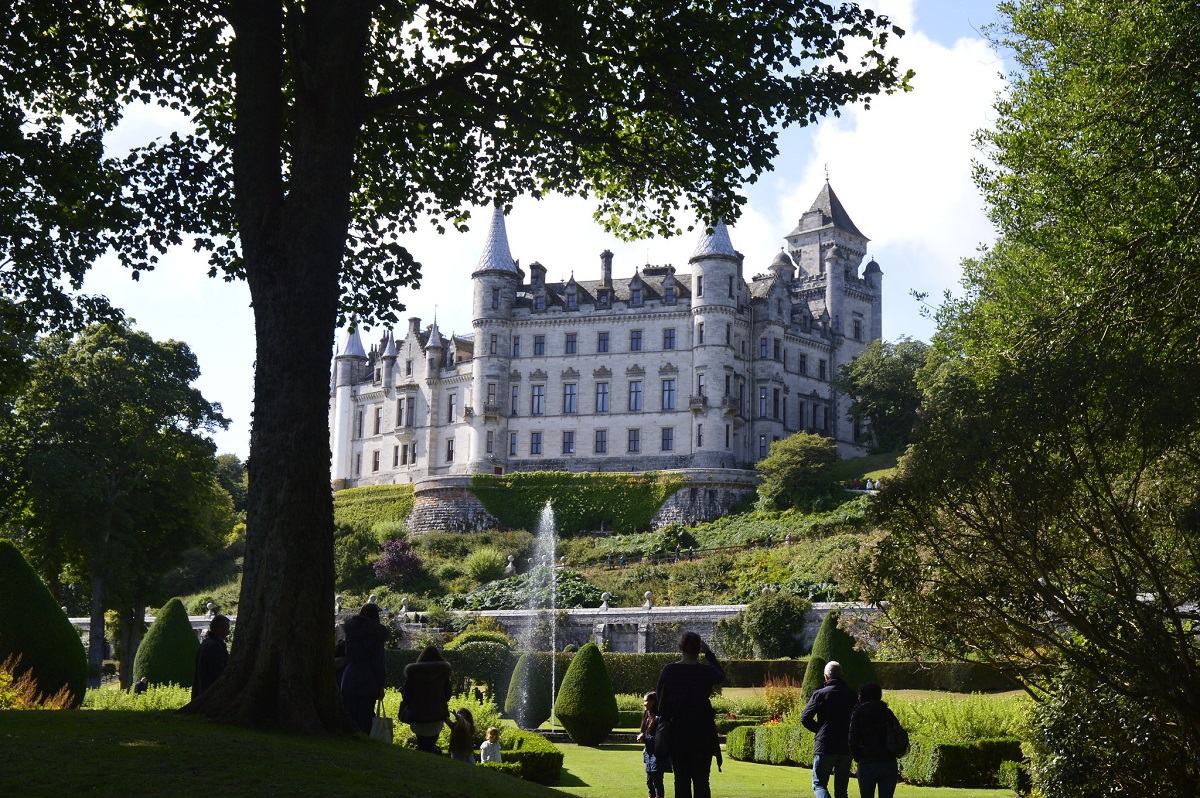
The spectacular Dunrobbin Castle and gardens - Photo - CJ Hughson - CC BY 2.0 Deed
John O'Groats and Dunnet Head
You must get that iconic photo at the famous John O'Groats signpost, the "unofficial" northern most point of the British mainland. It gets its name from a Dutchman, Jan de Groot, who was granted a charter by King James IV to run a ferry to The Orkneys in 1496.
The spectacular Duncansby Stacks are also worth a detour. Just a few miles east of John O'Groats is a breathtaking coastal walk with amazing views of the 6,000 year old sandstone pyramids.
The actual most northerly point of the UK mainland is Dunnet Head, 11 miles away in Caithness, and 2.5 miles north of John O'Groats. Dunnet Head is also worth a visit if you are a "twitcher" (bird watcher) as it is an RSPB Nature Reserve. You can see puffins, razorbills, guillemots and kittiwakes on the cliffs, as well as the famous Dunnet Head lighthouse, a 66 feet tall 19th century lighthouse on the top of the 300 foot cliffs at Easter Head.
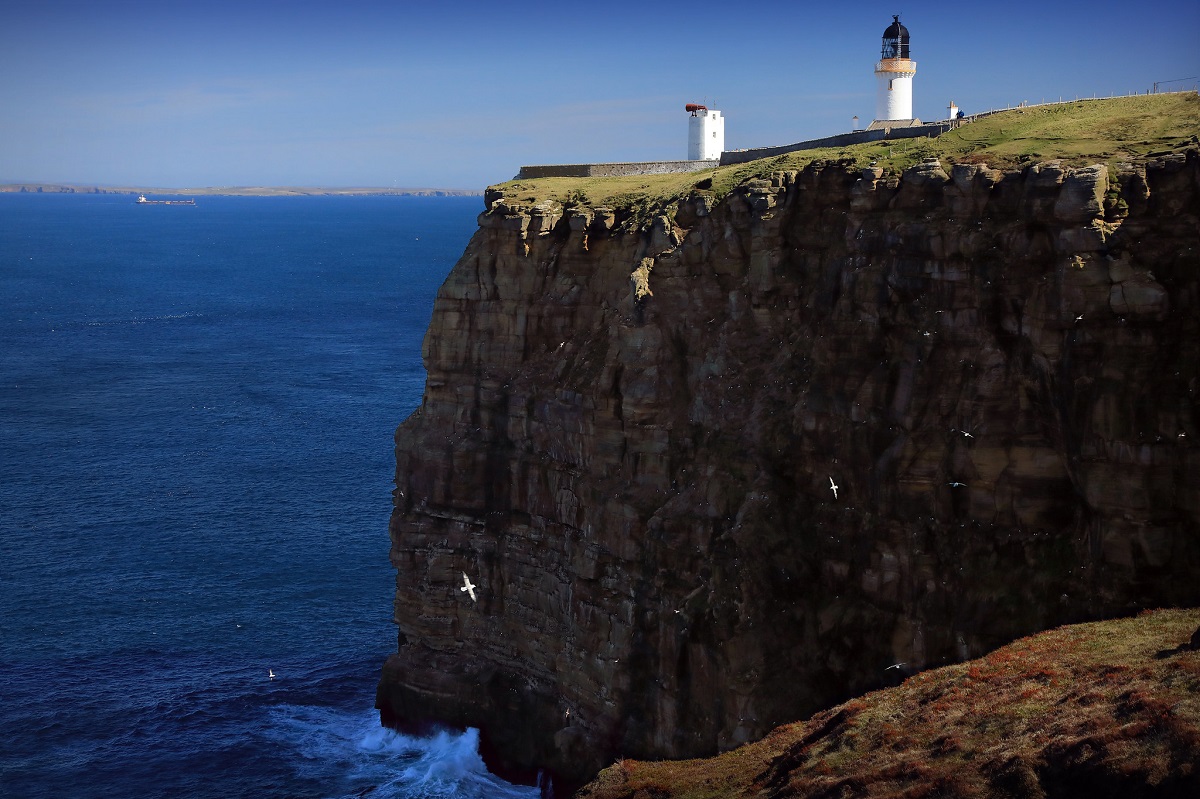
The cliffs and lighthouse at Dunnet Head - photo: Charlie Marshall - CC BY 2.0 Deed
Durness and Smoo Cave
The most north westerly village on the British mainland boasts several stunning beaches, including the unmissable Balnakiel Beach on the furiously named Cape Wrath. With clear waters, white sands and grassy dunes, it also faces west giving you an uninterrupted view of the spectacular sunsets.
Smoo Cave is a combined sea and freshwater cave. The main cavern gives onto a second smaller chamber with its famous waterfall. You can book a Smoo Cave boat trip or cave tour to fully appreciate the natural wonder of the cave and waterfall.
Ullapool and Wester Ross
Ullapool is a picturesque town on the shores of Loch Broom. It's a great stop for pubs and cafes as well as to take a ferry to Stornaway in the Western Isles. It's also the starting point of the Hebridean whale trail, giving you the chance to see whales, dolphins, porpoises and maybe even orcas on your NC500 trip.
From Ullapool, take in the Corrieshalloch Gorge with its suspension bridge over the Falls of Measach, a cascade of water crashing down 46m into the gorge below.
The Wester Ross National Scenic Area covers 1635 square kilometres of coastline and country down the north west Highlands, from Ullapool in the north to Applecross and Strathcarran in the south.
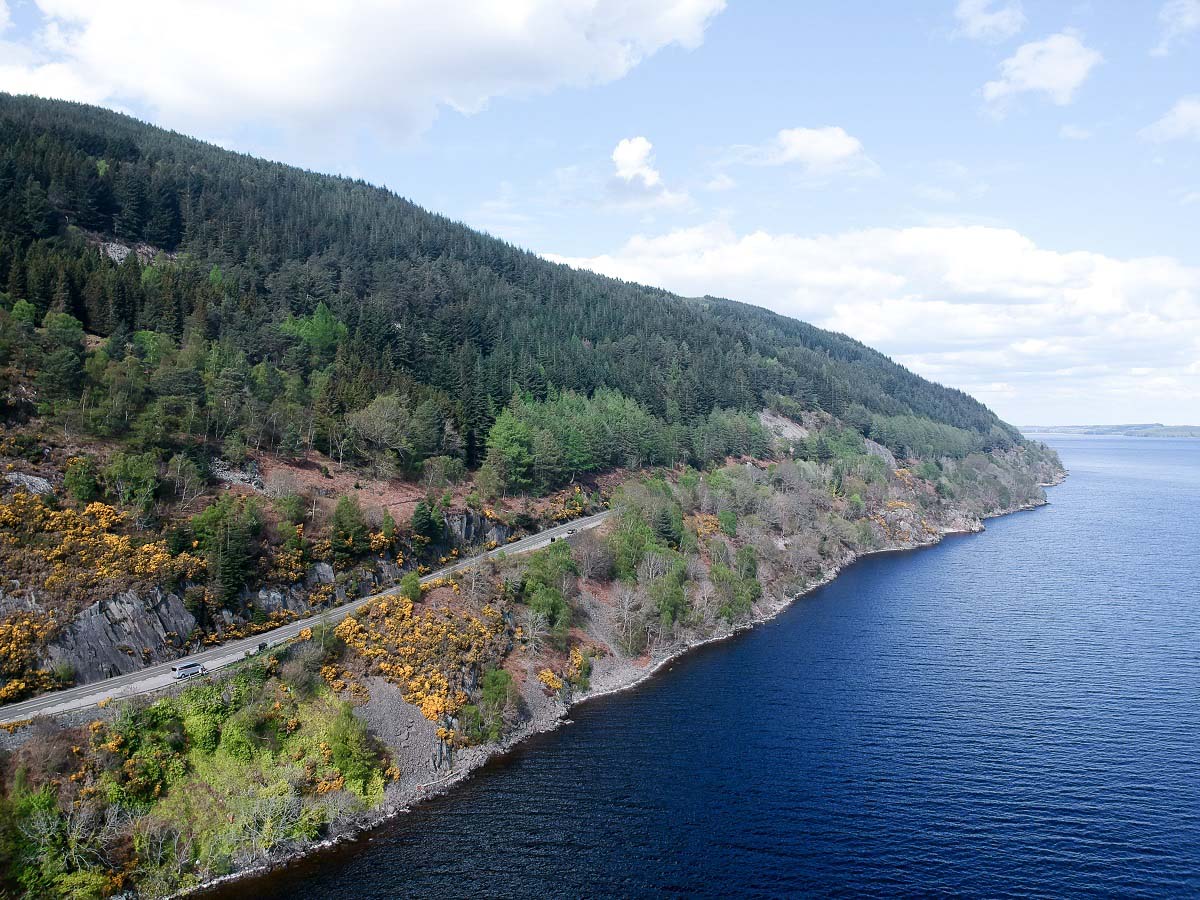
A Spaceship travelling in Wester Ross
Applecross and Bealach na Ba
Applecross is one of the oldest settlements in Scotland at over 1300 years old. There are only two ways in: the winding coast road from Shieldaig, or the famous Bealach na Ba. This translates as "the pass of cattle" and with its hairpin bends, rising to an altitude of over 2,000 feet, it is a spectacular mountain drive down into Applecross.
Once there, call in or stay at the Applecross Inn for some traditional Highland food or hospitality.
This map shows our highlights on your NC500 route.
More tips to get the most from your NC500 trip
Here are a few more general tips on how to get the most from your NC500 road trip, as well as some advice on respecting the local environment and community and the benefits of taking it easy...
Be prepared
The old Boy Scout motto, but super relevant here. The Highlands of Scotland on the NC500 route are remote with slower, and sometimes narrow and winding roads, so it may be some time before you find a place to top up your supplies.
The Scottish weather could probably best be described as "changeable" - at any time of year. As the comedian Billy Conolly remarked: "There's no such thing as bad weather, just the wrong clothing, so get yourself a sexy raincoat and live a little."
You should definitely take some extra layers for warmth, and wet weather gear - altough there is not much that's sexy about wet weather trousers, walking boots, a rain coat and a hat!
Make sure you've got something to drink (water will help you to stay hydrated) and some food or snacks to sustain you. Other useful items would be a torch or head torch and a day pack for trips off the route. A packet of plasters and thick socks would be useful if you are hiking. Mobile data coverage can be patchy, so a sat nav or old school map would be useful.
A basic first aid kit would be useful on any trip, and is provided in every Spaceships campervan and motorhome.
Respect and support local communities
Always remember that you are visiting the beautiful places along the NC500 route, but local people live and work there too. It's your holiday, but it's their home. They need to get to work, get the kids to school and vans and emergency vehicles need to get through. Let traffic pass if you are travelling more slowly, and don't block gateways.
Try to put a little bit back into this wonderful area. Support local shops, cafes, pubs and campsites. Taste the world class local produce and cuisine, and of course enjoy a wee dram at the end of the day's driving.
Also, please be considerate where you park. Respect other road users and never park in passing places, but use them to let other vehicles pass on single track roads, or to allow traffic to pass you if you have a long tailback behind you. Read more about how to drive the NC500 here.
Finally, take your time
The NC500 is a magnificent route through a spectacular landscape. It's not a circuit and it is certainly not a race track.
Take your time. Stop frequently to discover the natural beauty and drama of the landscape. It will help you to enjoy this incredible route and see more on your trip.
We would love you to experience this amazing road trip in a Spaceships campervan or motorhome. Hopefully this blog has given you some useful tips, inspiration and advice to help you to find the best way to do the NC500 on your ultimate #SpaceshipsRoadTrip.
All you've got to do now is choose your Spaceship and prepare for take-off!
Mike | Spaceships Crew
Meet Mike, a vibrant member of the Spaceships marketing crew, who draws his inspiration from the sea breeze. Always found near coastal areas around the globe, Mike harnesses the power of the ocean to craft amazing content about travelling the world.
From road trips to bike adventures, Mike is always on the move, exploring new places and capturing the essence of his journeys. His passion for discovery and his knack for storytelling make his travel narratives truly captivating.